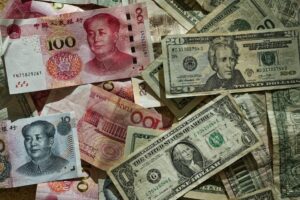The US Federal Reserve raised interest rates on Wednesday for the first time since 2006.
After weeks of anticipation (or are we up to years already?) the U.S. Federal Reserve ended its zero-percent interest rate policy on December 16th. Chairwoman Janet Yellen kept to the script of advertising a gradual increase in interest rates for the foreseeable future, with pundits around the world guesstimating that rates will be in the vicinity of 1.25% by the end of 2016.
The U.S. dollar immediately spiked higher against, well, pretty much every currency in the world. U.S. exporters bemoaned the impact a strengthening currency would have on their businesses.

Europe isn’t exactly shaping up either, although the whiffs of financial panic that accompany the Eurozone crisis have at least abated for now. Greece sinks into the morass a bit more with every passing month; even the Greek government has stopped manufacturing the fiction that a recovery will happen anytime soon. Now we have the Schengen agreement – which regulates the ability of Europeans to border-jump without document checks – under varying degrees of suspension in Hungary, Slovenia, France, Germany, Denmark, Austria and the Netherlands (and I probably missed a couple).
A rising dollar combined with a fading Europe and stumbling China is of course the worst possible news for commodity markets. Sure, overproduction in global oil markets (and American natural gas markets) sets the tune, but there are plenty of supporting actors. Brazilian and Australian miners – backed both directly and indirectly by Chinese money seeking any safe haven outside of China – doubled down on production facilities during the 2005-2014 boom. Now with demand stalled a reckoning is due – and that’s the best case scenario. Should the Chinese recovery prove as unlikely as I believe, the entire commodities world is in for a very dark half-decade…which just pours more energy into the dollar.
All told 2015 has shaped up to be a year of record U.S. inflows. When all the data is crunched, we’re looking at over $2 trillion in capital flight flooding into U.S. markets. The kicker is that even should China and Europe stabilize, this is just the beginning. The American Boomers continue their inevitable march into retirement, and alllll of their foreign holdings – the money that financed everything from subprime to the BRIC boom to the commodities swell – will be rolling back during the next few years.
China, Europe, commodities, the Boomers. These are all trillion dollar questions. Or perhaps it is more accurate to say they are all trillion dollar answers that the world just hasn’t quite internalized just yet.
Funny thing is, the Fed has quietly started us on the road to a much bigger split. As of this week the U.S. Federal Reserve is the only central bank in the world that is tightening monetary policy. The current expansion is coming up on seven years old, making it one of our longer periods of economic growth. We are due for a recession before long. The next time the global economy contracts, the United States will be the only country in the world with any monetary tools available.






